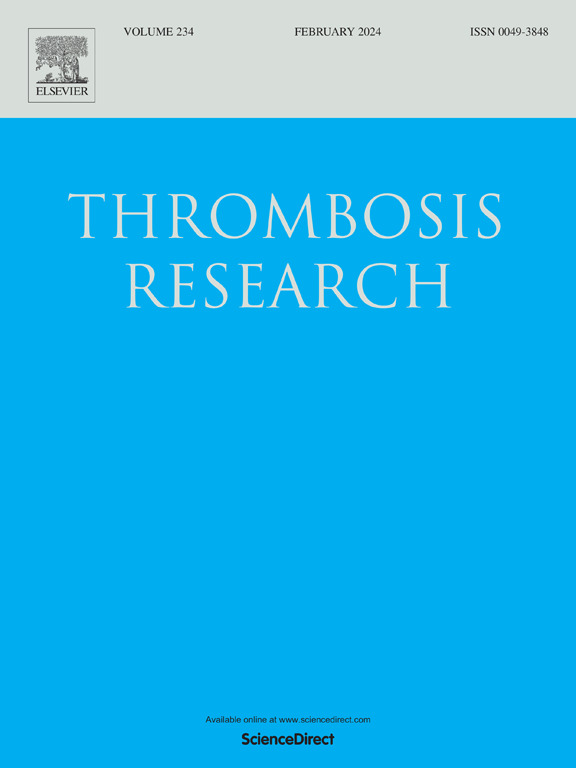Disseminated intravascular coagulation with hyperfibrinolysis induced by a degenerating uterine leiomyoma: A rare case report
IF 3.4
3区 医学
Q1 HEMATOLOGY
引用次数: 0
Abstract
Disseminated intravascular coagulation (DIC) is typically associated with malignancy, sepsis, or obstetric complications. Its occurrence in benign tumors, particularly uterine leiomyomas, is extremely rare. We report a case of a 49-year-old woman with two months of menorrhagia. Laboratory tests revealed anemia, prolonged clotting times, hypofibrinogenemia, and markedly elevated D-dimer and fibrin degradation products (FDP) levels. Coagulation factor activities (V, VIII, XII) were reduced. Thrombin-antithrombin complex (TAT) and plasmin-α2-plasmin inhibitor complex (PIC) were elevated, and thromboelastography (TEG) indicated hypocoagulability with hyperfibrinolysis. Image revealed a large degenerating uterine fibroid. Comprehensive workup excluded autoimmune, neoplastic, and inherited causes. After perioperative antifibrinolytic and coagulation management, hysterectomy was performed. Pathology confirmed extensive intratumoral thrombosis. Coagulation parameters normalized postoperatively without requiring transfusion, and no thrombotic events were observed. This case highlights a rare but important cause of DIC with hyperfibrinolysis secondary to a benign uterine tumor. It underscores the value of TEG and molecular markers in diagnosis and management, and the need to consider benign tumors in the differential diagnosis of unexplained coagulopathy.
变性子宫平滑肌瘤引起的弥散性血管内凝血伴高纤溶:一例罕见病例报告
弥散性血管内凝血(DIC)通常与恶性肿瘤、败血症或产科并发症有关。它发生在良性肿瘤,特别是子宫平滑肌瘤,是非常罕见的。我们报告一例49岁的妇女月经过多两个月。实验室检查显示贫血、凝血时间延长、低纤维蛋白原血症、d -二聚体和纤维蛋白降解产物(FDP)水平显著升高。凝血因子(V、VIII、XII)活性降低。凝血酶-抗凝血酶复合物(TAT)和纤溶酶-α2-纤溶酶抑制剂复合物(PIC)升高,血栓弹性成像(TEG)显示低凝伴高纤溶。图像显示一个大的变性子宫肌瘤。综合检查排除了自身免疫、肿瘤和遗传原因。经围手术期抗纤溶及凝血处理后,行子宫切除术。病理证实广泛的瘤内血栓形成。术后凝血参数恢复正常,无需输血,无血栓事件发生。本病例强调了一种罕见但重要的DIC合并高纤溶继发于良性子宫肿瘤的病因。它强调了TEG和分子标记物在诊断和治疗中的价值,以及在不明原因凝血病的鉴别诊断中考虑良性肿瘤的必要性。
本文章由计算机程序翻译,如有差异,请以英文原文为准。
求助全文
约1分钟内获得全文
求助全文
来源期刊

Thrombosis research
医学-外周血管病
CiteScore
14.60
自引率
4.00%
发文量
364
审稿时长
31 days
期刊介绍:
Thrombosis Research is an international journal dedicated to the swift dissemination of new information on thrombosis, hemostasis, and vascular biology, aimed at advancing both science and clinical care. The journal publishes peer-reviewed original research, reviews, editorials, opinions, and critiques, covering both basic and clinical studies. Priority is given to research that promises novel approaches in the diagnosis, therapy, prognosis, and prevention of thrombotic and hemorrhagic diseases.
 求助内容:
求助内容: 应助结果提醒方式:
应助结果提醒方式:


